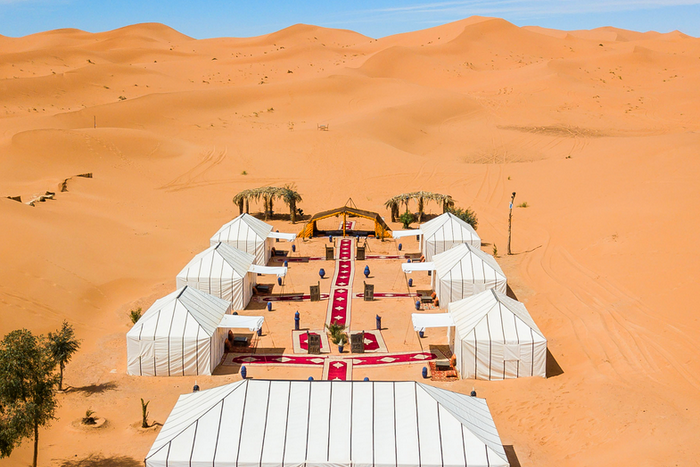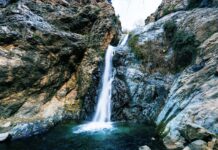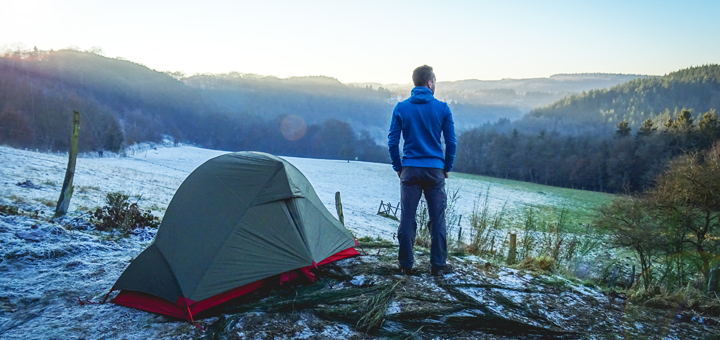Respect nature, manage its waste, avoid fires or optimize its stove: overview of the great basics of wild bivouac and mountain trekking. Knowing how to live to the rhythm of nature by putting your tent in the evening and folding in the early morning is essential in bivouac.
The bivouac is not wild camping. The bivouac is ephemeral, discreet and, ideally, invisible. We plant our tent at the last moment, at sunset, to raise it at the first light of the morning. And, above all, we will not leave any trace of our passage. A good practice of the bivouac depends on the perenniality of its practice, at a time when regulations are gradually nibbling at the very essence of this precious space of freedom.
Staying invisible
Even better than the tent, the tarp can hide easily. You never bivouac more than one night in the same place, except to move / replant your tent, and you will establish your camp in a place as discreet as possible (not in the middle of a field for example).
You will also ban any sonic noise type noise in the high mountain trekking Morocco or in the middle of the forest. Are not the most beautiful noises those found in nature? Finally, imperative rule: You take ALL your waste, without exception. The place must be as it was found, or better.
or in the middle of the forest. Are not the most beautiful noises those found in nature? Finally, imperative rule: You take ALL your waste, without exception. The place must be as it was found, or better.

No fire!
Comfort element, the campfire is rarely indispensable. Heat, cooking food, light … Fire is an amenity of comfort, which is rarely necessary, and always harmful to the environment. If it is not necessary, it will be avoided as much as possible.
However, fire is a very pleasant element in the bivouac, which participates in the imagination, with children in particular. If you decide anyway to light a fire (it is not forbidden, excluding specific regulations), it should be discreet and if possible bound around large stones. First rule of common sense: never ignite fire during drought, under penalty of flaming everything.
The use of wood must also be reflected. Only the dead branches will be picked up, without cutting the still green trees with the ax (which, in addition, will burn badly because full of water). A principle that must be applied even more in areas where vegetation is difficult to develop, such as in the mountains from a certain altitude: is it useful to cut these trees that grow to 2500 m of height and serve as a refuge for a micro fauna for its simple pleasure? To extinguish it, essential before leaving: water or earth on embers will do the trick.
Have the right stove
An optimized stove allows you to cook your food faster by consuming less … and therefore less gas! To answer this problem, we must begin by asking what the purpose of a stove is. In 99% of cases: simply boiling water: for a freeze-dried dish, pasta, or coffee. Do not bring the gas stove with you, that is reserved for polar expeditions where the cold and the lack of refueling impose this fuel.
A small gas cartridge and a compact stove (a hundred grams) are sufficient for hiking. For a little more expensive, the highly efficient stoves optimized greatly reduce the consumption of gas. For a weight slightly heavier than with a traditional system, the profit is incredible.

Never again PQ in nature!
Few dry toilets are in the woods. Expect to dig a hole in the ground… Nobody talks about it, but everyone does it! If some dry toilets exist on car parks or in natural parks, the vast majority of wild areas are devoid of amenities. To minimize the traces of its passage, it is advisable to do one’s needs in an isolated place, far from a watercourse or a place of passage (hiking path, bike path …).
The management of toilet paper or, even more, wipes (to absolutely avoid), is the most problematic point. If you cannot burn your toilet paper (fire hazard), bury it or, at a minimum, cover it with stones in an isolated area. The ideal: take it in a trash bag and throw it with the rest of your garbage.
The bonus: how to cook marshmallows
Cooking marshmallows, a moment of high gastronomy! On a lighter tone … no one can pretend to bivouac if he is not able to melt marshmallows on embers in the rules of the art. For all practical purposes, the marshmallow, planted at the end of a long thin stick cut in point, must be plunged vigorously and briefly in the heart of the fire, where the ember is hottest, characterized by an almost white color. In just a few seconds, the marshmallow ignites, during which time it is removed from the fire to allow it to cool for a few seconds in the open air. A thin caramelized crust now covers this little delight with a heart that has suddenly become almost liquid.
















